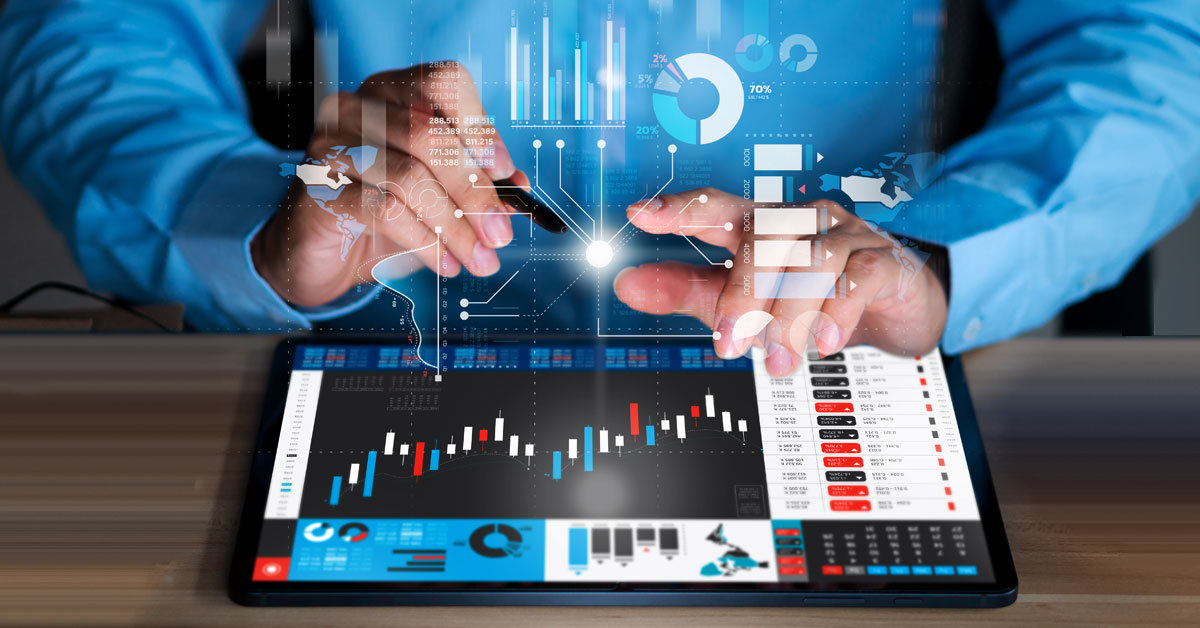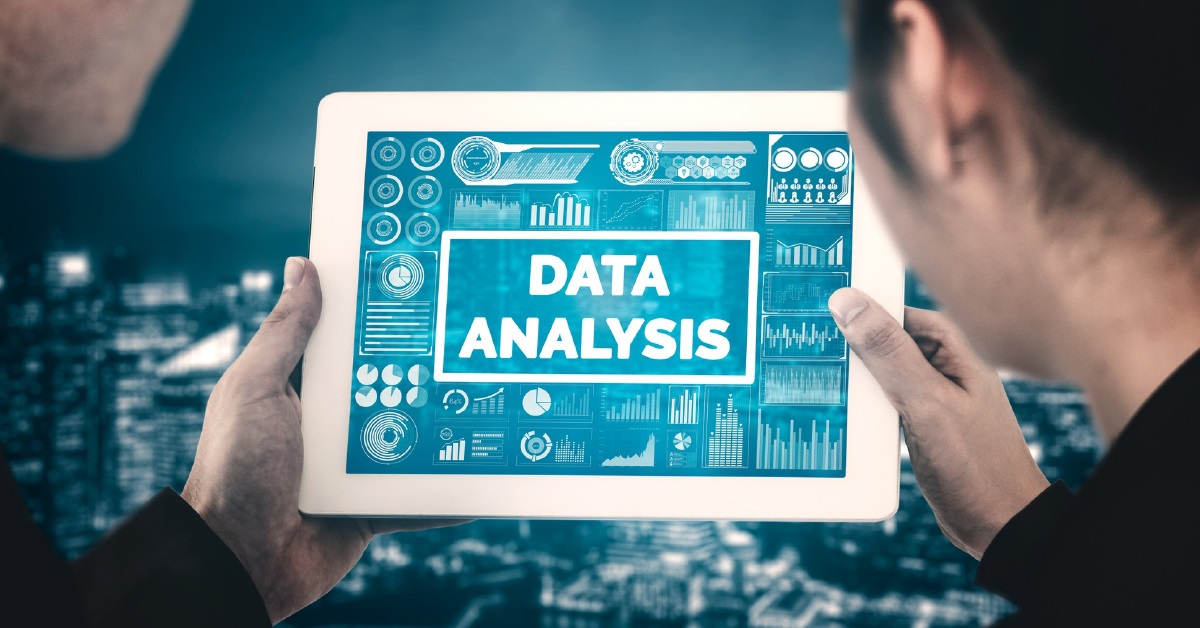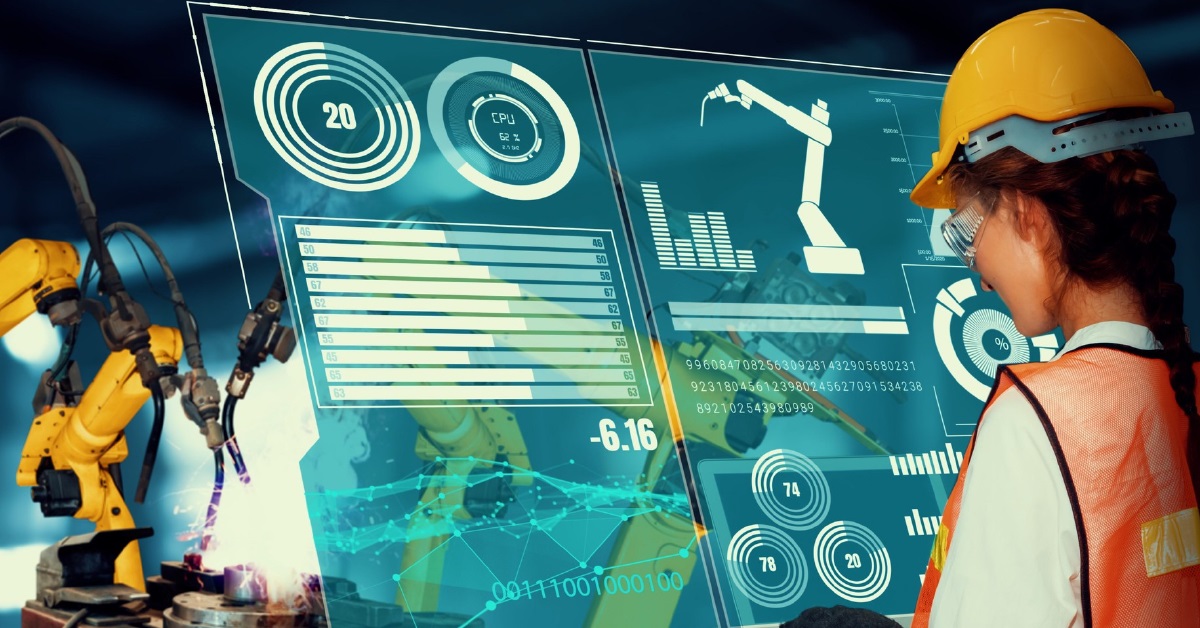Behind the Curtain: How Algorithmic Trading Strategies Really Work

7 min read
The world’s algorithmic trading operates within a mysterious realm dominated by intricate mathematical formulas and lightning-fast computers. Have you ever been curious about what goes on curtain? How do these strategies really work? We are here to explore the secrete of algorithmic trading. Continue reading our blog to learn much more about algorithmic trading strategies that drive modern markets.
All about Algorithmic Trading
The automatic execution of trades in financial markets through the use of computer programs and algorithms is known as algo trading. Because of its ability to quickly evaluate large amounts of data and make conclusions quickly based on predetermined criteria, its popularity has increased. Though it had been a notion for a long time, technological advancements made it a reality in the 1980s. In today’s major financial markets, a significant percentage of trades are executed using algorithms.
Algorithmic trading involves analyzing market data and trading decisions through the application of complex mathematical models and algorithms. These algorithms are created by knowledgeable programmers who have a strong background in both computer science and finance. First, algorithmic traders set predefined rules for entering and exiting trades. These rules are frequently based on news events related to the economy, technical indicators, or price changes. Following their establishment, these rules are incorporated into an automated system that keeps an eye on current market data and makes trades in accordance with them.
Types, Benefits and Risks of Algorithmic Trading
Algorithmic trading includes several kinds of algorithms, each designed for a certain use. They include trend-following algorithms, which keep an eye on market patterns to identify the best times to enter and leave positions. Mean reversion algorithms are designed to take advantage of overbought or oversold markets in order to profit from possible price reversals. Arbitrage algorithms look for price gaps across assets or markets and execute transactions to take advantage of them. Institutional traders widely use volume-weighted average pricing (VWAP) algorithms to execute big orders with minimal influence on the market efficiently.
Algorithmic trading has advantages. Traders can evaluate large amounts of data and execute trades in milliseconds through its renowned speed and efficiency, which is essential in volatile markets. Human error is a major concern in manual trading and can be significantly reduced by automation. Before risking actual money, algorithmic traders can also evaluate the performance of their methods under various market conditions by testing them with historical data. Furthermore, the simultaneous execution of several deals made possible by algorithmic trading increases overall trading volume and profit potential.
However, there are hazards associated with algorithmic trading. As with any computer program, trade execution mistakes can be caused by technical malfunctions. Traders may be concerned about certain algorithms due to their “black box” character, which obscures their inner workings and decision-making procedures. Another possible concern is market manipulation, whereby powerful institutional traders could use algorithmic trading to rig the market, giving unfair advantages to those who have access to these kinds of systems. Moreover, algorithmic traders may disregard risk management techniques or market movements as a result of an over-reliance on technology.
How Do Algorithms Work in Trading?
A key component of the financial markets is algorithmic trading, which accounts for more than 80% of daily trade activity. These algorithms use statistical analysis and mathematical models to find successful trading opportunities and independently execute deals. They function according to well-constructed rules. The first steps in the process are setting goals and limitations, then using previous market data to backtest the strategy and fine-tune it based on results. In order to connect to brokerage systems and initiate automated order placements, algorithms rely on Application Programming Interfaces or APIs.
Once implemented, algorithms trade a variety of securities, including stocks, options, futures, and currencies, quickly and continuously monitoring markets. One of their main advantages is that they can execute trades quickly because of their real-time reactivity to market movements. However, algorithms are not perfect and are susceptible to mistakes or unanticipated circumstances. For this reason, constant observation and upkeep are necessary for their success.
Different Types of Algorithmic Trading Strategies

Financial markets have changed as a result of algorithmic trading strategies’ increased speed, efficiency, and decrease in human error. These methods use complex algorithms and mathematical formulas to assess large amounts of data and make trades quickly. Numerous popular algorithmic trading techniques address different market circumstances and financial goals:
-
Trend-Following Strategies:
Strategies for identifying and profiting from market trends are known as trend-following strategies. Over a predetermined time frame, they search for price patterns and execute transactions with the presumption that established trends would hold. One such approach is the moving average crossover, in which the intersection of the short- and long-term moving averages generates buy and sell signals.
-
Mean Reversion Strategies:
These algorithms look for overbought or oversold scenarios based on the idea that prices ultimately return to historical averages following large deviations. As an illustration, consider pairs trading, which is buying one item at the same time and selling another when their values differ.
-
Arbitrage Strategies:
By executing simultaneous buy and sell orders, these strategies profit from price disparities in different marketplaces or assets. For example, currency arbitrage involves purchasing a currency at a discount in one market and selling it at a premium in another.
-
Scalping Strategies:
By placing several short-term trades, scalping seeks to capitalize on minute price fluctuations. Algorithms take advantage of quick changes in the market by using high-frequency trading strategies. One common scalping technique is liquidity provisioning, in which limit orders are positioned at various price points to take advantage of market fluctuations.
-
Sentiment Analysis Strategies:
These methods examine news articles, social media posts, and other sources of sentiment in the market by utilizing machine learning solutions and natural language processing. They do this by assessing market sentiment ahead of time, which helps them make trading decisions. For instance, a sentiment analysis approach might keep an eye on Twitter for mentions of a certain stock and take appropriate action based on that data.
These represent only a small portion of the numerous algorithmic trading techniques that exist. To manage risk and diversify their holdings, traders frequently employ a variety of tactics. The accuracy of the underlying algorithms and the quality of the data are what determine whether an algorithmic trading strategy succeeds or fails.
Advantages and Disadvantages of Algorithmic Trading
The benefits and drawbacks of algorithmic trading vary and have varying effects on traders and the financial markets. An outline of these features is given below:
Advantages
-
Speed and Efficiency:
Algorithms have a major advantage in fast-paced markets because they can analyze enormous volumes of data and execute trades in milliseconds.
-
Decreased Human Error:
By removing the possibility of human error during transaction execution, automated methods increase accuracy.
-
Backtesting Capabilities:
Before risking real money, traders can evaluate the past performance of algorithms under various market conditions.
-
Enhanced Trading Volume:
By allowing several deals to be executed simultaneously, algorithmic trading increases both the overall trading volume and the possibility for profit.
-
Liquidity and Narrow Spreads:
High-frequency trading helps to promote market liquidity and lower bid-ask spreads, which is advantageous to all parties involved.
-
Diversification:
By allowing algorithms to trade a wider range of securities, such as currencies, futures, options, and stocks, trading possibilities are increased.
-
Real-Time Monitoring:
Algorithms are able to react quickly to changing situations since they are able to monitor changes in the market continuously.
Disadvantages
-
Technical Errors:
There is always a chance that a computer program will malfunction, which could result in mistakes being made when executing trades.
-
Lack of Transparency:
Some algorithms are regarded as “black boxes” by traders because of their opaque internal workings.
-
Market Manipulation:
Algorithmic trading may be used by large institutional traders to manipulate markets, sometimes resulting in unfair advantages.
-
Over-Reliance on Technology:
Traders who rely too much on algorithms may fail to take risk management precautions and miss market movements.
-
Regulatory Scrutiny:
Rules and regulations are in place to monitor and govern trading operations, and algorithmic trading is subject to regulatory monitoring.
-
Complexity and Skill Requirement:
Some traders may not be able to develop and maintain algorithms because they demand programming and financial knowledge.
-
Costs:
Software development and fast connections are only two examples of the significant expenses that may come with gaining access to sophisticated algorithms and infrastructure.
The use of algorithms in trading offers significant benefits in terms of speed, effectiveness, less errors, and volume. However, it does have drawbacks in terms of technical difficulties, worries about transparency, and regulatory scrutiny. In their particular trading contexts, traders need to weigh the dangers and trade-offs of algorithmic trading carefully.
How Does Artificial Intelligence Fit into the Concept of Algorithmic Trading?
A growing amount of data and technological breakthroughs have made artificial intelligence (AI) a crucial component in algorithmic trading. Artificial Intelligence technology is beneficial in complex financial markets because it uses learning algorithms to evaluate data patterns, which sets it apart from traditional AI programming.
Through the analysis of past data from several sources, artificial intelligence (AI) in algorithmic trading forecasts price changes and recognizes market trends. With less dependence on biases and intuition, this data-driven strategy enables traders to make well-informed decisions in real time.
AI algorithms have an advantage in high-frequency trading because of their prowess in swiftly processing data. They execute trades without reluctance or prejudice since they are emotionless. AI improves risk management by keeping an eye on market conditions and modifying plans to reduce trade hazards. It can identify impending market crashes and modify portfolios in response, averting large losses.
The application of AI has prompted the creation of complex trading strategies that make use of machine learning methods like reinforcement learning and deep learning. Through time, these techniques lower risks and increase profits.
AI’s impact on the financial markets has raised certain concerns, nevertheless mostly related to potential biases or unethical behaviour as well as a lack of human control.
Future Predictions for Algorithmic Trading
The emergence of new tools and tactics has led to a steady evolution in algorithmic trading. Considerable trends are ahead for algorithmic trading. More precise and effective transactions based on data analysis are promised by the growing use of artificial intelligence (AI).
Another important development is the use of blockchain technology, which increases security and transparency. As algorithms grow increasingly intricate, efficient risk management will be essential to avert significant losses.
Cryptocurrencies and alternative investments are two new areas where algorithmic trading is expected to grow. However, predictions of more controls, have been prompted by worries about the stability of the market.
Hybrid approaches, in which human traders collaborate with algorithms, present an opportunity to integrate human experience with technological efficiency and perhaps yield more profitable trading strategies.
Conclusion
At the end of the day, “Behind the Curtain: How Algorithmic Trading Strategies Really Work” has given us an enlightening look into the complex realm of robotic trading. It has uncovered the intricate plans and techniques that support this quickly developing sector. As we have dug more into these algorithms’ inner workings. We have learned more about how blockchain, Artificial Intelligence, and data are being used to shape the financial markets of the future.
In addition, as algorithmic trading continues to spread into new and developing countries. Our investigation has brought attention to the necessity of strict risk management and heightened focus on regulations in order to preserve market stability. Furthermore, the idea of hybrid approaches. Which combine human knowledge with algorithmic efficiency offers creative opportunities in the search for profitable trading methods.
It is clear that algorithmic trading is more than simply a fad; rather, it represents a fundamental change in the way that trading is done as the financial industry adjusts to new developments. Although the future is still unknown and susceptible to many factors. Our increased comprehension of algorithmic trading enables us to recognize its enormous potential and influence on the world financial scene.
Published: November 17th, 2023





